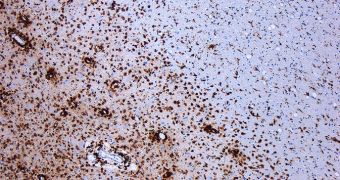Investigators in Sweden recently took on a theory devised by Italian colleagues, which sought to explain the causes of the brain disease known as multiple sclerosis (MS). The new paper demonstrates that neither blood flow nor the flow of spinal fluid in the human brain play any role in the onset and development of the condition, which promotes the demyelination of nerve cells. There is currently no known cure for the disease, and so any debate on it has the potential to set scientists on the right path to developing a cure, AlphaGalileo reports.
The new study was authored by researchers at the Umea University, who are most certainly aware their work goes against one of the most widely-accepted explanations of how MS appears. They are however not alone in their conclusion. Recently, a team of German investigators was unable to find any clear evidence supporting the idea that blood flow or the flow of spinal fluid to the cortex were indicators of a person's risk of developing the condition.
Multiple sclerosis is characterized by the fact that nerve cells begin to lose their myelin sheet. This fatty, insulating layer ensures that the electrical signals that are transmitted through neurons go from their source to their destination undisturbed. MS causes scars (scleroses) in the white matter of the brain and spinal cord, while at the same time promoting the loss of cells' myelin sheet (a process called demyelination). The process is irreversible at this point, and there is little healthcare experts can do for their patients in terms of treatments.
“The Italian theory is hard to accept for many reasons. For instance, there are no reports of increased incidence of MS in patients with conditions that impair venous outflow, such as following tumor operations in the throat. For many years, before the advent of magnetic camera technology, MS patients were also often examined using cerebral angiography, so-called skull coloring, a technique that should uncover these kinds of changes,” explains Norrlands universitetssjukhus (University Hospital of Umea) Neurology Clinic chief physician Peter Sundstorm. The German and Swedish studies appear in the August 2 issue of the esteemed medical journal Annals of Neurology.

 14 DAY TRIAL //
14 DAY TRIAL //